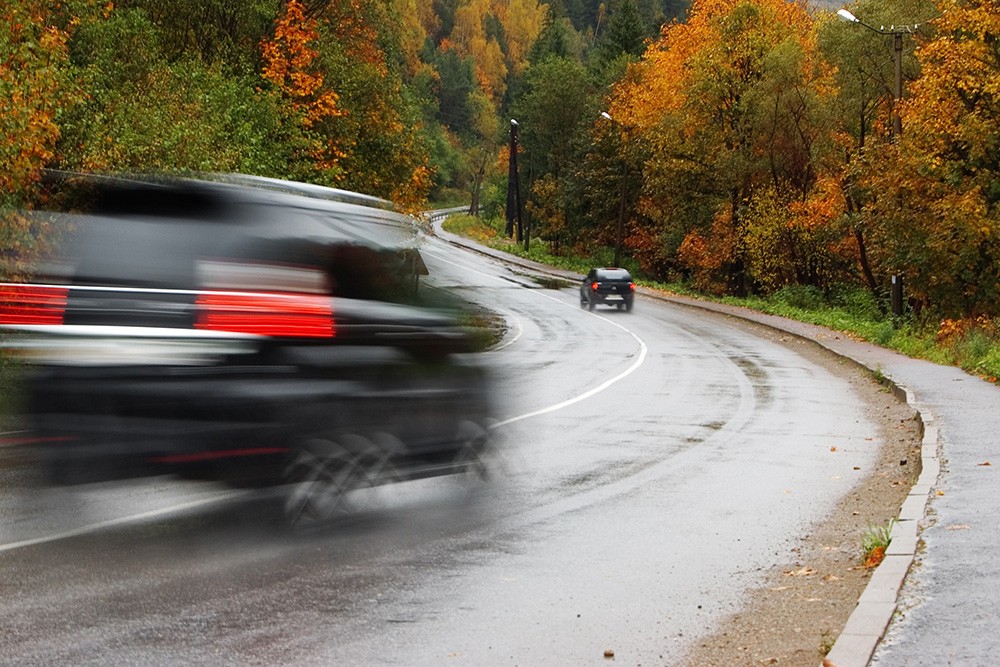9 Vehicle Safety Tips For Your November Checklist
Published on November 07, 2023 02:34 AM

The holiday season is a time for celebration and spending time with family. Yet, it's also a time when roads can become congested with eager travelers on their holiday road trips.
Holiday travel is stressful enough. Reduce the stress by prepping your car for winter roads with these vehicle maintenance tips to help navigate those traffic jams smoothly and ensure your car remains trouble-free.
November checklist items for safe holiday travel
- Check your heater and defroster. Turn on the system and adjust the settings. Check to see if the system is doing what it’s supposed to do. If warm air doesn’t seem to be coming out, it is a sign your vehicle thermostat may need to be replaced.
- Check your vehicle’s ventilation. The lines could be clogged with leaves and twigs accumulated during summer road trips and early autumn. Make sure you are getting warm air from the front to the back of your vehicle.
- Inspect the spare tire. Keep a pressure gauge in the glove box to make sure tires are properly inflated, and don’t forget the spare tire. This tire often is neglected but could be a real lifesaver during holiday travel or blizzard.
- Switch to Winter Tires. Consider switching to winter tires if you live in an area with plenty of snow and icy conditions. Winter tires offer improved traction and control in colder temperatures.
- Wiper blade replacement. Don’t wait until harsh winter arrives, replace wipers now if wipers are cracked or you’re seeing streaks across the windshield. This is an easy add on to an oil change you have scheduled.
- Top off your windshield washer fluid. Autumn storms tend to coat your windshield with dirt and grime collected on summer roads. Top off your fluid tank before venturing out for your Thanksgiving family road trip.
- Check your engine belts. Warm days may be behind us but their effects can linger into fall and winter. Heat increases wear and tear on belts. Don’t let cracked belts or worn-out hoses disable your vehicle on the next family outing. Ensure your vehicle’s serpentine belt can make it through the winter.
- Test Exterior Lights. Check all exterior lights, including headlights, taillights, brake lights, and turn signals. Proper lighting is essential for safe driving during winter storms and long winter nights.
- Prioritize regular maintenance. Preventative maintenance is key to lowering repair costs. Before hitting the road, ensure your vehicle has undergone its scheduled maintenance. This includes checking the oil, brakes, tire pressure, and fluid levels. A well-maintained vehicle is less likely to encounter unexpected issues during traffic delays.
Vehicle safety tips for driving in holiday traffic
- Keep your engine cool. In bumper-to-bumper traffic, engines can overheat, even in winter. Make sure your cooling system is in good condition, and the coolant levels are appropriate. If you notice your temperature gauge rising, consider turning off your air conditioning and turning on your heater. This may sound counterintuitive, but it helps dissipate heat from the engine.
- Keep coolant levels in check. This goes hand in hand with your car overheating. If your car overheats in the winter, there most likely is a problem with the cooling system. Coolant, also known as antifreeze, is a lifesaver for your engine. Ensure that your coolant levels are within the recommended range and that the mixture of water and coolant is appropriate.
- Manage your battery. Stuck in a traffic jam with no letup in sight? Extended periods of idling may strain your car's battery. Turn off non-essential electrical devices like the radio, air conditioning, and headlights to reduce the load on your battery. If you notice signs of a weak battery, such as slow cranking or dimming lights, consider replacing the vehicle battery.
- Maintain a safe following distance. In stop-and-go traffic, maintaining a safe following distance prevents unnecessary wear on your brakes. It also gives you ample time to react if the car in front of you suddenly stops.
- Avoid overloading your car. Holiday travel often involves packing gifts and luggage. Be mindful not to overload your vehicle, as excessive weight can strain your suspension, brakes, and tires. It also reduces fuel economy.
- Plan for pit stops. If you anticipate heavy traffic, plan for pit stops along your route. These breaks allow your car's engine to cool down and provide you with a chance to stretch your legs.
- Practice patience. Stress and frustration can escalate during traffic jams, leading to aggressive driving behaviors that strain your car's systems. Stay patient and avoid rapid acceleration and sudden braking–two habits that can increase the need for maintenance and repair.
- Emergency kit essentials. Always have an emergency kit on hand, especially during the holiday travel season. Include items like water, snacks, a first aid kit, flashlight, jumper cables, and a basic toolkit. These items can be invaluable in case of unexpected delays or minor issues.
- Stay informed. Use navigation apps and traffic updates to stay informed about road conditions ahead. Being aware of traffic patterns can help you plan alternate routes to avoid the worst congestion.